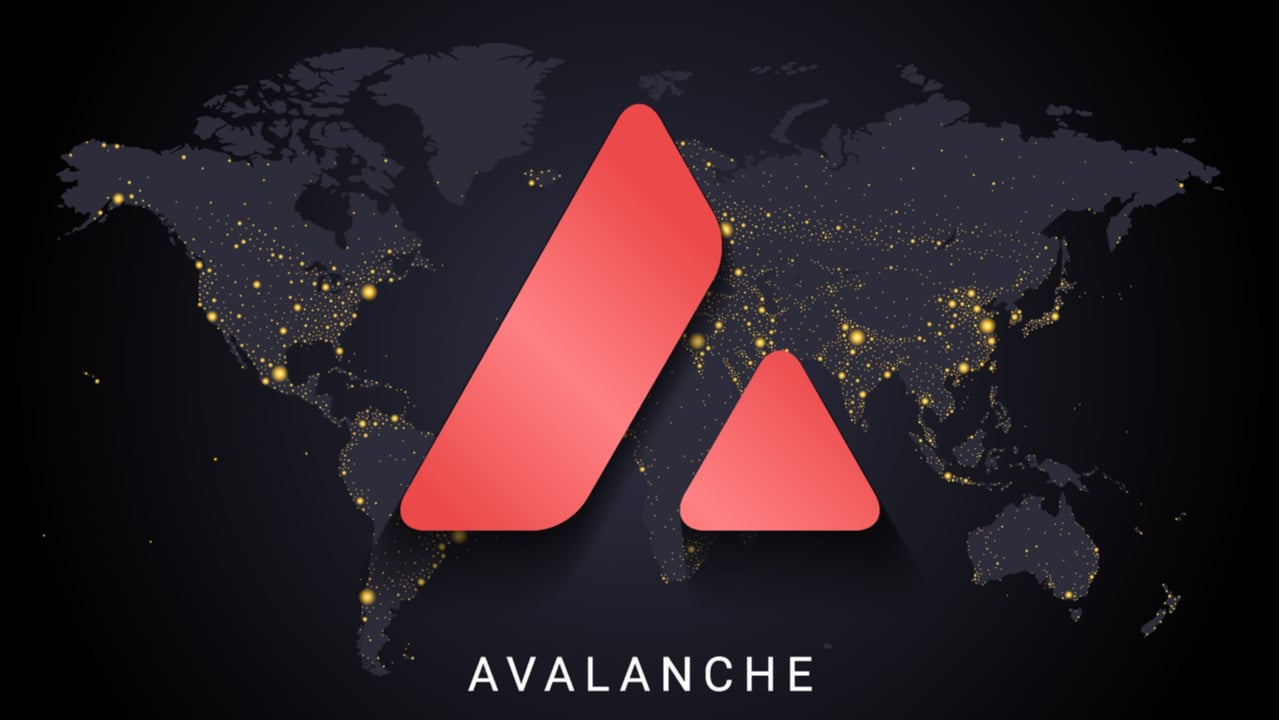 The Avalanche Foundation announced the launch of Memecoin Rush, a program designed to incentivize meme coin liquidity providers on selected platforms in the AVAX environment. The program will allocate $1 million to participants that provide liquidity for these tokens on Trader Joe and Steakhut, two AVAX decentralized platforms, and expand to include other platforms. Avalanche […]
The Avalanche Foundation announced the launch of Memecoin Rush, a program designed to incentivize meme coin liquidity providers on selected platforms in the AVAX environment. The program will allocate $1 million to participants that provide liquidity for these tokens on Trader Joe and Steakhut, two AVAX decentralized platforms, and expand to include other platforms. Avalanche […] After the American financial technology giant Paypal rolled out crypto payments last year, the company is now introducing cryptocurrency transfer services to Venmo users. The firm detailed that Venmo customers will be able to send funds to an existing Paypal account, an external wallet, or a crypto exchange platform. Venmo Customers Can Now Transfer Cryptocurrency […]
After the American financial technology giant Paypal rolled out crypto payments last year, the company is now introducing cryptocurrency transfer services to Venmo users. The firm detailed that Venmo customers will be able to send funds to an existing Paypal account, an external wallet, or a crypto exchange platform. Venmo Customers Can Now Transfer Cryptocurrency […]
The game theory of Bitcoin and cryptocurrencies analyzes the behavior and strategies of participants in the market using concepts such as the prisoner’s dilemma.
The unique characteristics of cryptocurrencies make them an interesting subject for game theory analysis, as they can help explain the incentives and behaviors involved in trading and investing. This article discusses the concept of the prisoner’s dilemma, mining cryptocurrencies and blockchain forks that are relevant to the game theory of Bitcoin and cryptocurrencies.
Game theory is a mathematical framework that helps explain decision-making in strategic situations. Cryptocurrencies, like Bitcoin (BTC), have become a popular subject for game theorists due to their decentralized nature and potential to disrupt traditional financial systems.
In the classic game theory scenario known as the prisoner’s dilemma, two parties must make a choice without knowing what the other will do. In the context of cryptocurrency mining, the prisoner’s dilemma can help explain why miners may act in their own self-interest, even if it is not in the best interest of the network as a whole.
The first miner to successfully solve a challenging mathematical equation receives fresh BTC units. Both computer power and energy usage are essential requirements for the mining operation. The tragedy of the commons, which happens when individuals prioritize their own interests over the needs of the whole, is one of the biggest obstacles in cryptocurrency mining. By mining cryptocurrencies, miners may put their individual financial gain ahead of the network’s overall security and stability.
A helpful foundation for comprehending this behavior is provided by the prisoner’s dilemma. In the scenario, two people are arrested for a crime, and they are offered the option to work together or turn on one another. If they both cooperate, their sentences are both lowered. When one betrays the other, the betrayer is given a lighter punishment, while the other is given a lengthier one. Both receive a moderate penalty if they betray one another.
Related: How does blockchain solve the Byzantine generals problem?
Miners confront a similar decision-making process while mining cryptocurrencies. The network is safe and secure if all miners collaborate by mining honestly and making a contribution. Yet one miner may benefit more from mining maliciously or not contributing to the network if they choose to behave in their own self-interest.
Let's look at the below diagram illustrating an example of two miners in a cryptocurrency pool to understand how the prisoner's dilemma can be applied to the context of cryptocurrency mining.

In the above diagram, Miner A and Miner B are two miners in a cryptocurrency mining pool. They have the choice to cooperate (continue mining together) or defect (leave the pool and mine independently). The rewards and payoffs are based on the classic prisoner's dilemma scenario:
This diagram illustrates how the prisoner's dilemma can be applied to the context of cryptocurrency mining. It shows the potential rewards and payoffs for each combination of cooperation and defection, and can help miners make decisions about whether to stay in a pool or mine independently.
To address this challenge, cryptocurrency networks can implement various incentives and mechanisms to encourage miners to act in the interest of the network as a whole. For example, networks can reward miners who contribute to the network with lower fees or increased mining rewards. Additionally, networks can implement penalties or defensive mechanisms to discourage malicious behavior.
Blockchain forks are another scenario where game theory can help explain the decision-making process of participants. A fork occurs when a blockchain network splits into two separate paths, often due to disagreements among participants about the direction of the network.
A fork can be thought of as a coordination game from the perspective of game theory. Two or more players must work together to attain a common objective in a coordination game. Participants in a blockchain fork must work together to decide which fork to promote and which to reject.
The Bitcoin network split into two distinct forks in 2017: Bitcoin and Bitcoin Cash. This is one of the most well-known instances of a blockchain fork. Disagreements within the Bitcoin community on how to expand the network to handle an increasing volume of transactions led to the creation of this fork.
In this case, members of the Bitcoin community had to choose between sticking with the old Bitcoin network and switching to the new Bitcoin Cash network. The choice was not easy because each fork has pros and cons of its own. For instance, while Bitcoin Cash offered quicker transaction times and lower fees, Bitcoin had a larger network and higher acceptance.
Participants in this scenario had to take into account their personal preferences and opinions regarding the potential future worth of each network in the context of game theory. Participants would be motivated to promote Bitcoin Cash even if it meant leaving the original Bitcoin network if they thought it had a stronger chance of long-term growth.
Related: How to buy Bitcoin Cash: A beginner’s guide for buying BCH
Let's look at the below diagram, illustrating two miners facing the choice of whether to adopt a new fork in the blockchain or continue on the old fork to understand how game theory can be applied to the context of blockchain forks.

The above diagram depicts the strategic decision-making of two miners, Miner A and Miner B, on a blockchain, as they face the choice of either adopting a new fork or continuing on the old fork. The rewards and penalties are based on the following assumptions:
This diagram illustrates how game theory can be applied to the context of blockchain forks. It shows the potential rewards and penalties for each combination of adopting or not adopting a new fork, and can help miners make decisions about whether to switch to a new fork or stick with the current one.
To address this challenge, cryptocurrency networks can implement various mechanisms to ensure that forks occur as smoothly as possible. For example, networks can implement replay protection, which prevents transactions on one network from being replayed on the other.
 The largest marketplace for non-fungible tokens (NFTs), Opensea, has announced major changes to its fee structure and policies in response to a shift in the NFT ecosystem. The company detailed that it will drop fees to zero for a limited time and offer an optional creator earnings model with a minimum of 0.5% for all […]
The largest marketplace for non-fungible tokens (NFTs), Opensea, has announced major changes to its fee structure and policies in response to a shift in the NFT ecosystem. The company detailed that it will drop fees to zero for a limited time and offer an optional creator earnings model with a minimum of 0.5% for all […] The Italian Parliament has introduced a 26% capital tax on cryptocurrency gains as part of the 2023 budget law, which was approved on Dec. 29. The document also offers incentives for taxpayers to declare their cryptocurrency holdings, proposing a 3.5% aliquot for undeclared cryptocurrencies held before Dec. 31, 2021, and a 0.5% fine for each […]
The Italian Parliament has introduced a 26% capital tax on cryptocurrency gains as part of the 2023 budget law, which was approved on Dec. 29. The document also offers incentives for taxpayers to declare their cryptocurrency holdings, proposing a 3.5% aliquot for undeclared cryptocurrencies held before Dec. 31, 2021, and a 0.5% fine for each […] Golden, a startup that seeks to build a decentralized data hub, has raised $40 million dollars in a Series B funding round. The round, which was led by a16z crypto, will allow the company to keep building its concept, which revolves around combining data submission and validation with Web3-based token incentives. Golden Raises $40 Million […]
Golden, a startup that seeks to build a decentralized data hub, has raised $40 million dollars in a Series B funding round. The round, which was led by a16z crypto, will allow the company to keep building its concept, which revolves around combining data submission and validation with Web3-based token incentives. Golden Raises $40 Million […] Boba Network, an L2 (layer 2) expansion layer for Ethereum, has announced the launch of what it calls “Wagmi” options as a way of incentivizing builders and supporters to be invested in the project. The incentive programs will be distributed amongst different projects on the chain and will be based on various indicators such as […]
Boba Network, an L2 (layer 2) expansion layer for Ethereum, has announced the launch of what it calls “Wagmi” options as a way of incentivizing builders and supporters to be invested in the project. The incentive programs will be distributed amongst different projects on the chain and will be based on various indicators such as […] Avalanche Foundation, the organization behind the Avalanche chain, has announced the launch of Blizzard, a fund that will entice development and innovation on the Avalanche ecosystem. The Fund, which has $200 million available for its task, is composed of contributions coming from Avalanche Foundation, Ava Labs, Polychain Capital, Three Arrows Capital, among other participants. Blizzard […]
Avalanche Foundation, the organization behind the Avalanche chain, has announced the launch of Blizzard, a fund that will entice development and innovation on the Avalanche ecosystem. The Fund, which has $200 million available for its task, is composed of contributions coming from Avalanche Foundation, Ava Labs, Polychain Capital, Three Arrows Capital, among other participants. Blizzard […] Avalanche, a smart contract-enabled cryptocurrency, has received a $230 million investment from a group of VC companies. The funding round, which is being described as a private sale, was led by Polychain and Three Arrows Capital, with the participation of other companies. This investment will give these companies participation in on-chain Avalanche governance and exposure […]
Avalanche, a smart contract-enabled cryptocurrency, has received a $230 million investment from a group of VC companies. The funding round, which is being described as a private sale, was led by Polychain and Three Arrows Capital, with the participation of other companies. This investment will give these companies participation in on-chain Avalanche governance and exposure […]